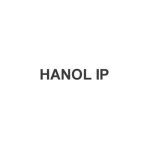In South Korea, similar to the US and other countries, consumer surveys serve as evidence of consumer recognition or perception in trademark practice, including litigation.
A trademark survey has varying probative value depending on its methodology and reliability, and it is assessed alongside other evidence.
In a recent judgment, the Korean Supreme Court, in case 2023Hu11180, clarified the standards for valid surveys, upholding a lower court’s decision that consumer survey results submitted in trademark litigation were inadmissible as evidence of consumer perception.
Utilisation of consumer surveys in Korean trademark cases
The critical issues in trademark litigation include:
The similarity of marks and/or goods, or the likelihood of confusion;
The inherent or acquired distinctiveness of a mark as a source identifier;
The likelihood of being seen as descriptive terms or generic names of goods; and
Trademark awareness or the renown of a trademark.
These issues arise from the perception of consumers or traders within their pertinent markets. An effective way to confirm this perception involves conducting surveys, although the survey results alone may not perfectly demonstrate consumer perception. The probative value of survey results can be enhanced when they are consistent with objective data such as the length of trademark use, sales figures, market share, marketing and advertising expenditures, and other search results.
The use of survey evidence in trademark litigation has gradually increased over the past 20 years in Korea. In some cases, surveys were conducted at the request of courts. Notably, in the past five years, several Intellectual Property High Court rulings have clarified the criteria in detail as to the probative value and the admissibility of survey evidence.
The Korean Supreme Court’s ruling on appeal over consumer surveys
In the aforementioned case, an examiner of the Korean Intellectual Property Office determined that the applied-for trademark was similar to four marks previously registered by another entity and thus rejected the application.
The applicant appealed the rejection to the Intellectual Property Trial and Appeal Board (IPTAB), and subsequently brought the case to the Intellectual Property High Court and the Supreme Court of Korea.
The applicant conducted two consumer surveys during the IPTAB process. The surveys used an identical questionnaire consisting of five questions, with the order of the questions being simply rearranged. During the litigation, the applicant submitted two survey results as evidence proving the unlikelihood of confusion between the applicant’s mark and the four earlier marks.
In its decision on October 25 2024, the Supreme Court affirmed that the probative value of survey results is determined at the judge’s discretion. The court also stated that the probative value can be determined by scrutinising whether the design and execution of the consumer survey conform to the objective procedures and standards generally accepted in the field of such surveys. The court presented specific criteria to consider, as follows:
The survey population (or cross-section of the public in the field) should be appropriately defined;
The samples representing the consumer population should be reasonably selected from the entire survey population;
Appropriate controls should be in place to reduce errors according to the interviewees’ attitudes;
The contents of the questionnaires and the ways of presenting trademarks should be appropriate;
The contents of the questionnaires should not be biased or structured in a way that induces a specific response;
The location and timing of the interview should be relevant; and
The mode of questioning the interviewee should be correct, etc.
In light of the above criteria, the Supreme Court upheld the decision of the Intellectual Property High Court that the survey results in this case are inadmissible as evidence, stating that the contents of the questionnaires and the ways of presenting trademarks were not designed to enhance the survey’s credibility, because:
The presentation in the questionnaire at issue violated the principle of comparison by recollection of the marks at distance in that the questionnaire “juxtaposed” the marks to be compared (i.e., the applied-for mark and an earlier mark) in the same space, and asked whether the two marks were similar or not; and
The questionnaire was designed to “induce” a specific response by presenting the answer options to each question in the same content and sequence.
Key takeaways and suggestions on the use of trademark surveys
Conducting trademark surveys is usually expensive and time-consuming. Therefore, it is worthwhile to review court judgments and standards to increase the reliability and credibility of survey results as evidence in trademark litigation.
The elements of a questionnaire will vary depending on the position of the party submitting the survey results as evidence. Consequently, two opposing parties might submit survey evidence showing conflicting results. Therefore, it is advisable to strike a balance between the goal of obtaining a favourable result and the necessity of ensuring the credibility of the survey. Furthermore, if achieving a favourable result in a survey seems challenging, it could be a more efficient and wiser strategy to consider an alternative solution, such as seeking the consent of the opposing party for the registration or use of the similar trademark.












